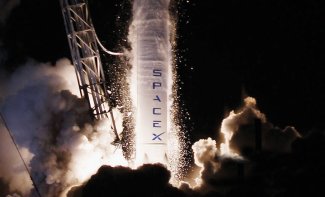
The next space race is on, and ONU alumni are right in the thick of it, working in both the public and private sectors of the aerospace industry.
There is just something about space exploration that people remember. Just ask a 60-year-old where they were when Neil Armstrong set foot on the moon, or someone in their 40s about the Challenger tragedy. You’ll get more than an answer. You’ll get a story about where they were and what they were doing. They’ll even tell you how they felt.
As space makes us remember, it also makes us dream. Even after more than 60 years of human exploration, outer space is still largely unknown. We’ve merely scratched the surface of what many believe is possible, and space exploration – once the bastion of superpowers – is now in the hands of those believers. We find ourselves at the beginning of a second space race, but this time, everyone – including many Ohio Northern University graduates – is working together.
With the establishment of NASA in 1958, the United States ushered in a new era of scientific discovery and exploration. But NASA served another purpose as well. Throughout the Cold War, the U.S. and Soviet Union raced one another to complete every successive “great achievement” in space exploration.
This scientific battle served as a proxy war between the two nations, and the Soviet Union took an early lead, launching the first satellite (Sputnik) and man (Yuri Gagarin) into space. But NASA turned the tide, and by July 1969, the space race peaked when American astronaut Neil Armstrong walked on the moon and captured the imagination of a nation.
Today, we find ourselves in another exciting period of space exploration with the partnership of state-level space programs, like NASA, and private-sector companies, like SpaceX, Blue Origin and Virgin Galactic. But unlike the original space race, this one isn’t about beating the competition, it’s about collaboration. It’s about pushing space exploration farther and faster than ever before.
Ohio Northern graduates are employed on both sides of the modern aerospace industry, and, in general, ONU is rather well-represented in the field. So how does a school that doesn’t offer an aerospace engineering degree produce so many “rocket scientists”? The answer, says Dr. Jed Marquart, BSME ’80, professor of mechanical engineering, is pretty basic.
“The intellectual gap between mechanical engineering and aerospace engineering is rather small, and there is a significant overlap in the knowledge and concepts used in both fields. But as a mechanical engineering student, you learn the basics really well, as well as other aspects of engineering that are crucial to the aerospace field, like communication and working in teams,” he says.
Marquart knows of what he speaks. He himself graduated with a mechanical engineering degree from ONU; earned master’s and doctoral degrees in aerospace engineering from the University of Dayton; and began his career working for Arvin/Calspan, SofTech Inc. and, eventually, Wright-Patterson Air Force Base. When he joined the faculty at ONU, he brought his aerospace engineering experience with him.
“I loved working in the aerospace industry. It’s what I’d always wanted to do before I discovered teaching,” he says. “And when I got to ONU, I saw everybody going into the automotive industry, and there’s nothing wrong with the automotive industry, but there’s other cool stuff out there.”
Marquart’s passion led to the creation of ONU’s aerospace engineering concentration, which students can pursue alongside their major program. The courses required for the concentration help students learn a number of fundamental skills used in the aerospace industry. Students are introduced to aircraft design, advanced thermodynamics, computational fluid dynamics and finite element analysis.
They participate in the ONU chapter of the American Institute of Aeronautics and Astronautics (AIAA), compete in the annual SAE Aero Design Competition, and tackle a senior capstone project sponsored by the Air Force Research Labs at Wright-Patterson Air Force Base or NASA Glenn Research Center. Earning an aerospace concentration gives students who wish to enter the field upon graduation or apply to graduate programs an added layer of experience on top of a well-rounded, comprehensive engineering education.
Years from now, it will be interesting to see if anyone remembers where they were when Elon Musk launched his Tesla roadster into space. But you can be sure that future societal flashbulb memories will be formed from the next “giant leap for mankind.” And who knows, maybe we’ll all have an ONU Polar Bear to thank for it.
LEARN MORE ABOUT OUR AEROSPACE ENGINEERING CONCENTRATION HERE